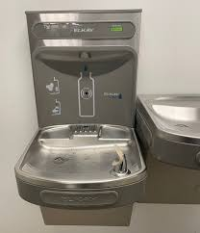jar546
CBO
One of the most commonly misunderstood aspects of plumbing code compliance is the use of high-low drinking fountains. A recent discussion raised the question: If three drinking fountains are required by code, can you meet the requirement by installing two high-low fountains at opposite ends of a corridor?
Let’s break this down using principles found in the 2018, 2021, and 2024 editions of the International Plumbing Code (IPC).
So when you install two high-low drinking fountains, you’re effectively providing four drinking fountains — two for standing users and two accessible.
While this article is based on guidance provided by the International Code Council's (ICC) premium interpretation service, the content here is paraphrased and presented for educational purposes only.
Let’s break this down using principles found in the 2018, 2021, and 2024 editions of the International Plumbing Code (IPC).
Understanding the Code Intent
Per Section 410.3 of the IPC, a single high-low fountain counts as two separate fixtures — one positioned at standard height for standing users and the other at a lower height accessible to individuals using wheelchairs. This dual-height setup ensures compliance with accessibility requirements under both the IPC and the Americans with Disabilities Act (ADA).So when you install two high-low drinking fountains, you’re effectively providing four drinking fountains — two for standing users and two accessible.
The Practical Application
In a scenario where three drinking fountains are required (per IPC Table 403.1), providing two high-low units exceeds the minimum requirement. This configuration not only satisfies the count but ensures accessibility at both ends of the corridor, improving usability and compliance.Important Takeaways
- High-low fountains count as two: one standard, one accessible.
- Two high-low units = four drinking fountains.
- If the requirement is for three, then two high-low fountains are more than sufficient.
- This interpretation applies across multiple IPC code cycles, including 2018, 2021, and 2024.
While this article is based on guidance provided by the International Code Council's (ICC) premium interpretation service, the content here is paraphrased and presented for educational purposes only.







